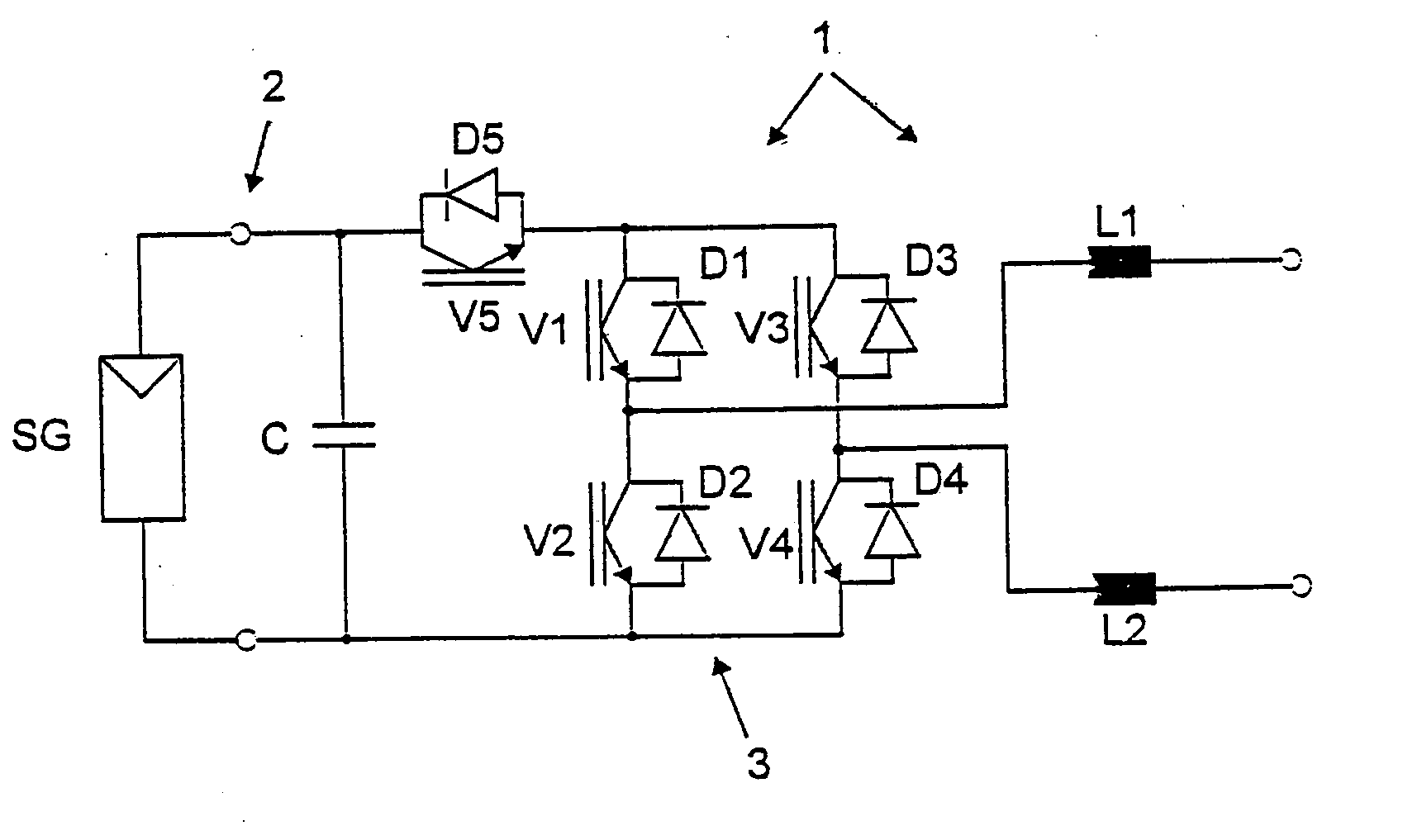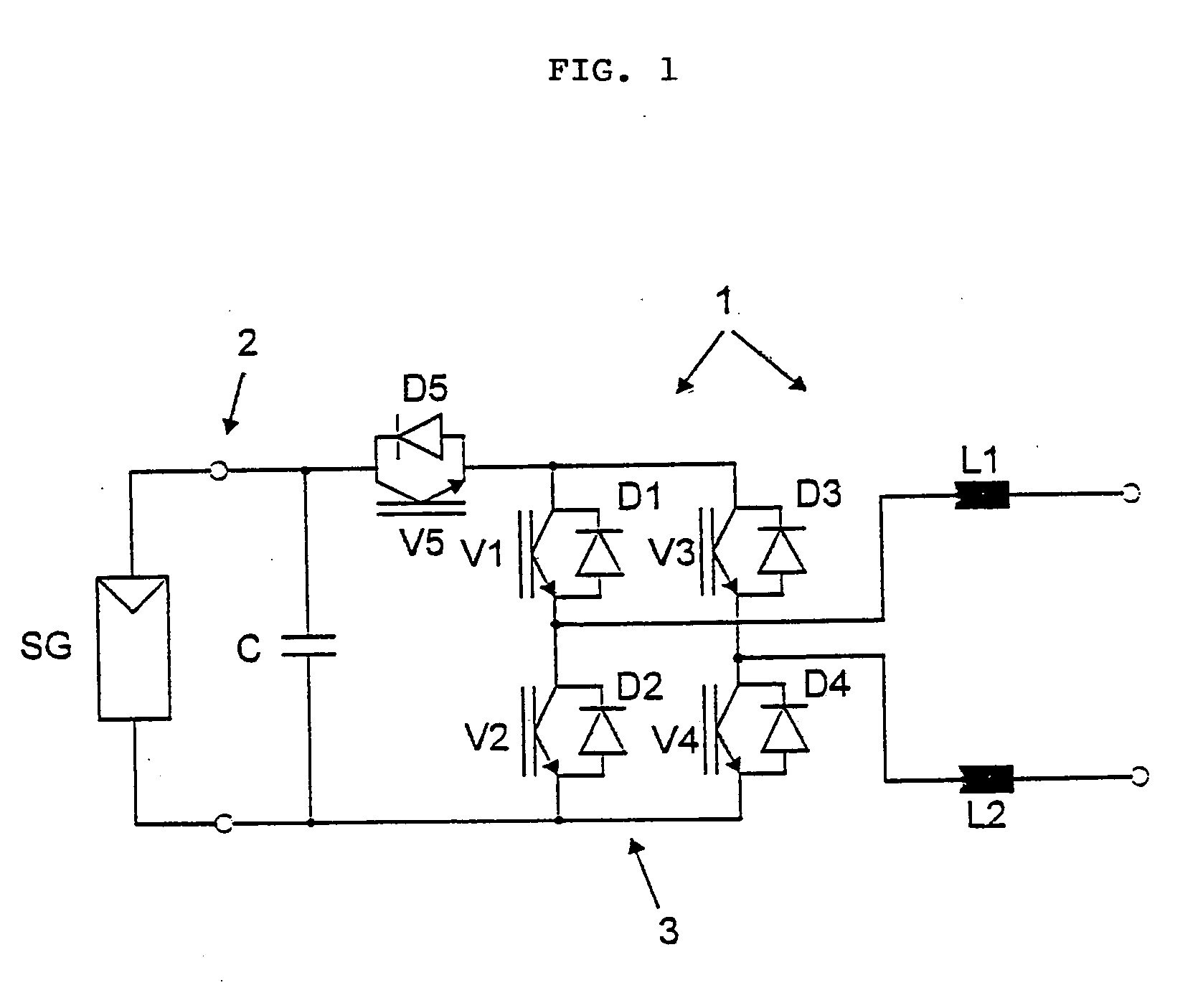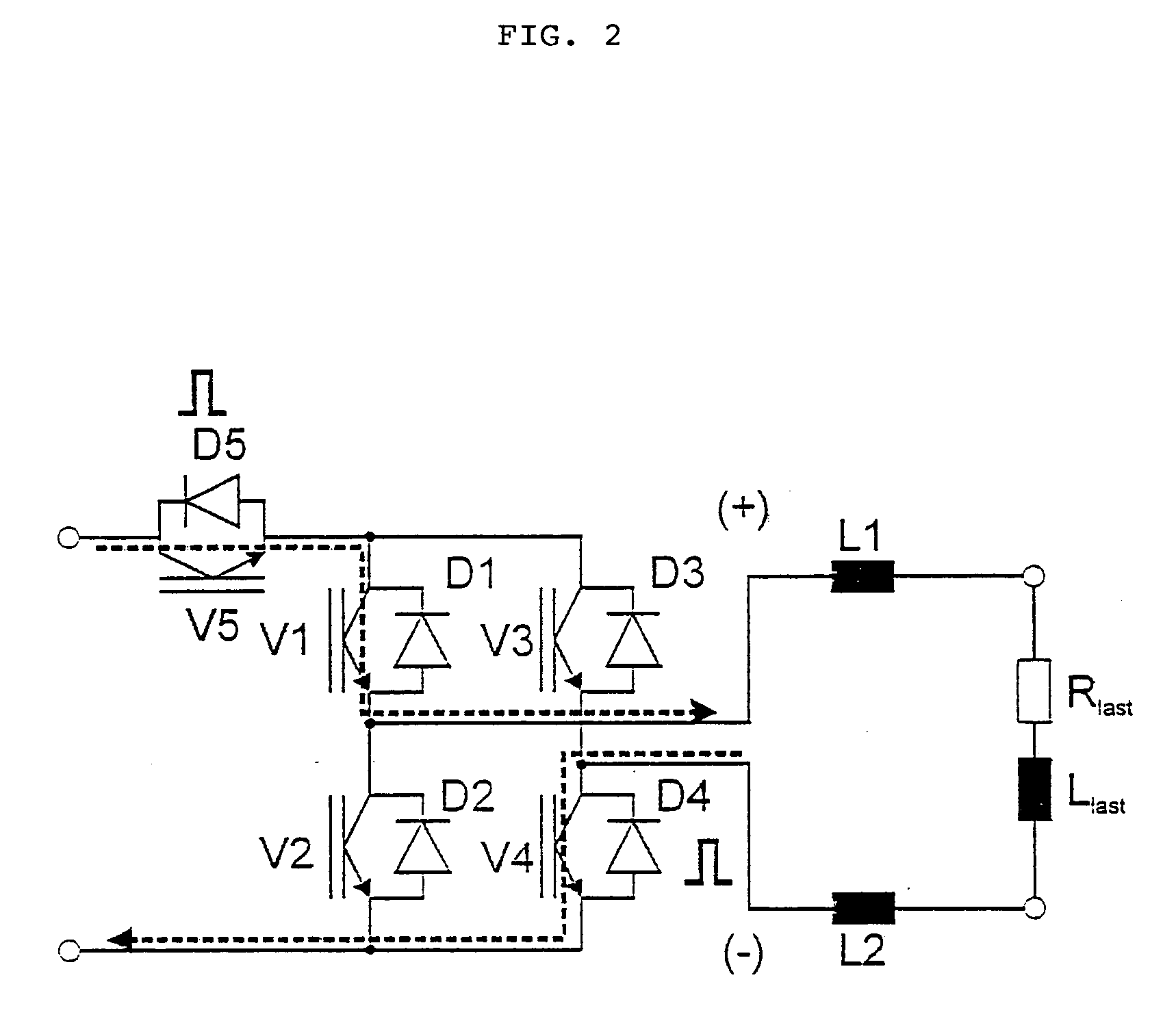Method of converting a direct current voltage from a source of direct current voltage, more specifically from a photovoltaic couse of direct current voltage, into a alternating current voltage
a direct current voltage and direct current technology, applied in the direction of power conversion systems, ac network circuit arrangements, electrical apparatus, etc., can solve the problems of reducing the efficiency of the circuit, and causing further losses, etc., to achieve simple low-loss circuitry, reduce material cost, and high efficiency
- Summary
- Abstract
- Description
- Claims
- Application Information
AI Technical Summary
Benefits of technology
Problems solved by technology
Method used
Image
Examples
Embodiment Construction
[0031]FIG. 1 shows an inverter 1 of the invention with a solar generator SG or with a photovoltaic generator. This circuit allows for a method of converting a direct electric current of a photovoltaic source of direct current into an alternating current at a frequency of 50 Hz for example.
[0032] At the input terminals 2 of the inverter 1, a filter capacitor C or storage capacitor is connected in parallel to the solar generator SG. Together with the capacitor C, the solar generator SG forms a direct current voltage intermediate circuit or a DC-circuit. The inverter has an H-bridge 3 with four semiconductor switching elements V1-V4 and one additional switch V5. Free-wheeling diodes D1-D5 are connected in parallel to the switching elements V1-V5. Two reactors L1 and L2 are located at the bridge branch in the alternating current voltage part.
[0033] The upper switching elements V1 and V3 are gated at a mains frequency of 50 Hz for example whereas the lower switching elements V2 and V4 ...
PUM
 Login to View More
Login to View More Abstract
Description
Claims
Application Information
 Login to View More
Login to View More - R&D
- Intellectual Property
- Life Sciences
- Materials
- Tech Scout
- Unparalleled Data Quality
- Higher Quality Content
- 60% Fewer Hallucinations
Browse by: Latest US Patents, China's latest patents, Technical Efficacy Thesaurus, Application Domain, Technology Topic, Popular Technical Reports.
© 2025 PatSnap. All rights reserved.Legal|Privacy policy|Modern Slavery Act Transparency Statement|Sitemap|About US| Contact US: help@patsnap.com



